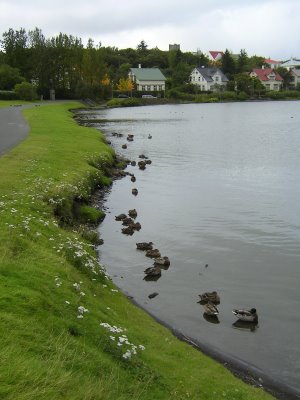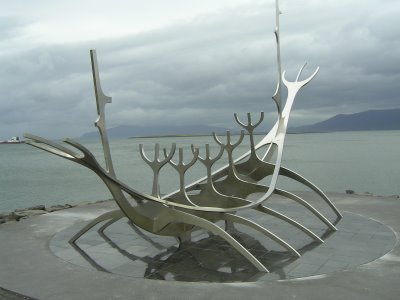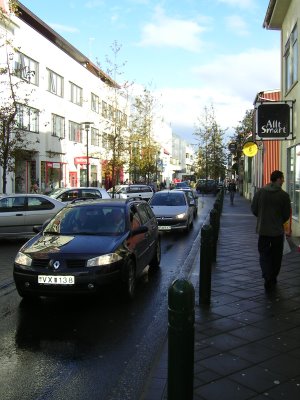Monday, October 09, 2006
Press Release of Genalytics Model 6.0
ThomasNet reports that Genalytics released Genalytics Model 6.0, that uses genetic algorithms to identify credit risks, anticipate customer attrition, and detect probable bankruptcies:
Genalytics Model 6.0 transforms large amounts of transaction data into predictive intelligence and uses genetic algorithms to automatically search and identify key combinations of time series variables found in any dataset. By studying time series patterns, organizations can identify credit risks, anticipate customer attrition, and detect probable bankruptcies. Software also allows users to format modeling output for Java and SPSS.Doug Newell, founder of Genalytics, gave a talk at GECCO 2005, as reported here.
Saturday, September 30, 2006
John Holland in Canada
Mahantesh reports that John H. Holland is visiting St. John's, Newfoundland in Canada (here). Here is a synopsis of his talk on complex adaptive systems:
No doubt this was the doing of Wolfgang Banzhaf, head of CS.
The Department of Computer Science hosts the world-famous computer scientist and inventor of Genetic Algorithms (GA's), Dr. John Holland, from the University of Michigan. His talk on Complex Adaptive Systems (CAS) will discuss the study of complexity, innovation, and relations between CAS and GA's. Sponsor: Computer Science.
No doubt this was the doing of Wolfgang Banzhaf, head of CS.
Sunday, September 24, 2006
Embracing mistakes
Sometimes it is important to make mistakes, lots of them, on the way to doing something new (here).
Saturday, September 23, 2006
Genetic algorithm for Ruby
Rubyforge has a fairly recent posting for a package called rGenetic:
rGenetic is a genetic algorithm package for Ruby. The idea is to develop an easily customizable suite, allowing simple integration into a problem requiring genetic algorithms or evolutionary programming.Matthew Linnell is the project administrator. See here for additional detail.
Fast GA on Freshmeat
Freshmeat has a new posting for a publicly available genetic algorithm called FGA (fast genetic algorithm). The code is by Alessandro Presta and claims to be
a simple yet powerful implementation of a general genetic algorithm, and provides many types of crossover and selection procedures. The library is easy to incorporate into other applications. Further improvements include parallelization of the algorithm in multi-processor environments and general performance optimizations.See here for more detail.
Michael Corleone and the next generation GA?
Read here about what The Godfather character and the next generation of genetic algorithms have to do with one another.
Thursday, September 21, 2006
Some photos from Reykjavik
Following Dave's suggestion, I'm posting some photos from Reykjavik, capital of Iceland, where PPSN 2006 was held. Iceland has about the same area as Portugal but with a population of only 300.000 people, which gives the lowest population density (2.7/km^2) for a european country.
About 2/3 of the population lives in or around Reykjavik.
Since I spent most of my time at Reykjavik, I only have photos from there, but Kumara and Pier-Luca have really nice photos of some great Icelandic landscapes. I hope they post some of them.
City Hall at Tjornin lake:

Tjornin lake:

The Sun Voyager by Jon Gunnar Arnason:

Laugavegur street (downtown main street):

Hallgrimskirkja church:

Reykjavik from Hallgrimskirkja church tower:


Blue Lagoon:

About 2/3 of the population lives in or around Reykjavik.
Since I spent most of my time at Reykjavik, I only have photos from there, but Kumara and Pier-Luca have really nice photos of some great Icelandic landscapes. I hope they post some of them.
City Hall at Tjornin lake:

Tjornin lake:

The Sun Voyager by Jon Gunnar Arnason:

Laugavegur street (downtown main street):

Hallgrimskirkja church:

Reykjavik from Hallgrimskirkja church tower:


Blue Lagoon:

Tuesday, September 19, 2006
Bullet train designed by GA
Kazu Inaba told me this morning that the new Shinkansen has been designed in part by a genetic algorithm. A quick google search confirmed the not-so-news here on the JR Central site:
"The development of the nose shape incorporated the latest analysis method (genetic algorithm*4), used in the development of airplane wings, for the first time in railway rolling stock. In doing so, we have developed a nose shape with the optimal aerodynamic performance accommodating 300 km/h operation, while ensuring the Series 700 seating capacity and spacious interior."A picture of the new train is shown above.
Friday, September 15, 2006
GAs and fighting androids
Vaughan at mindhacks.com has a nice post about Risto Miikulainen's NERO and NEAT here. NERO is a wargaming system in which the android soldiers adapt using neural net brains evolved using genetic algorithms.